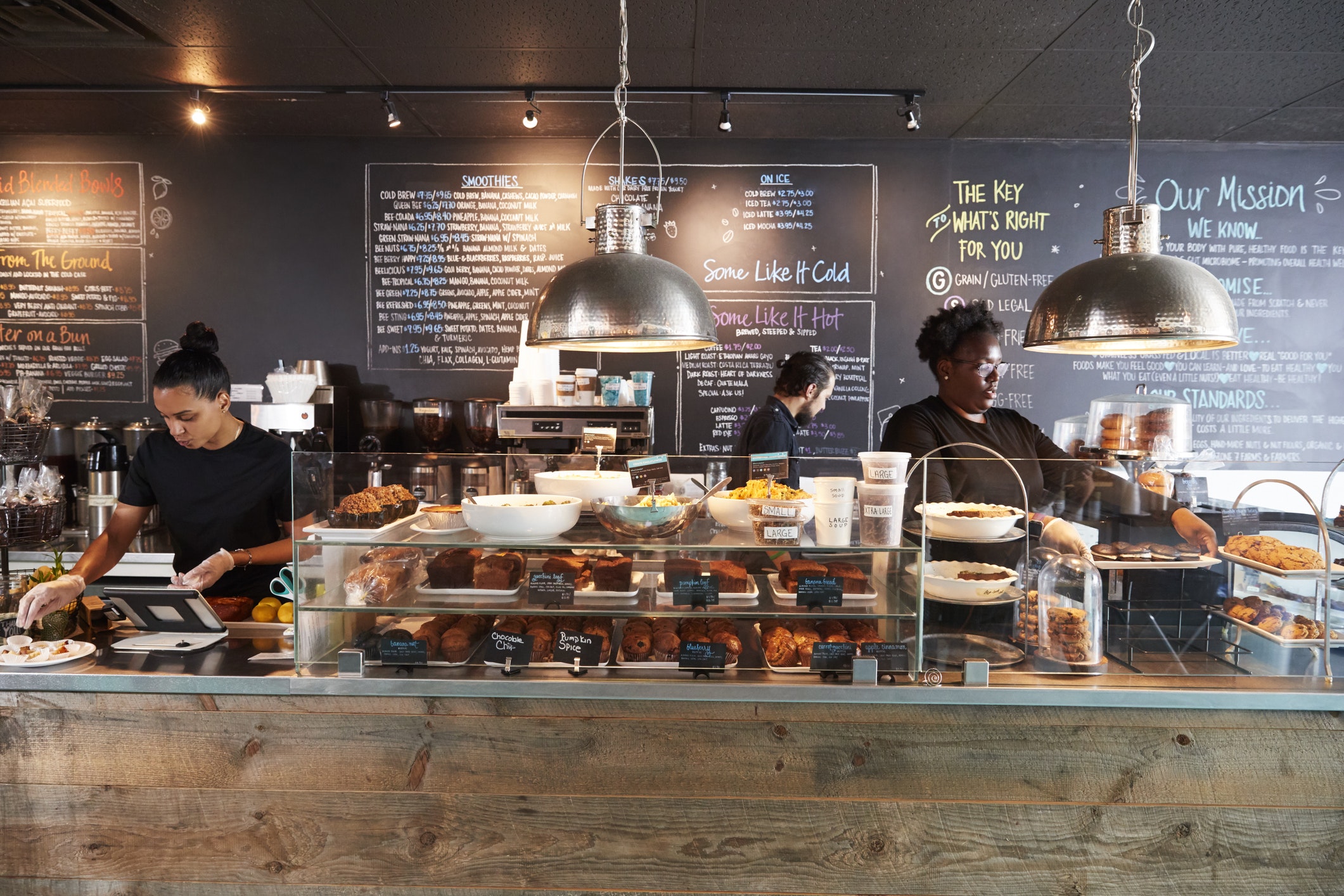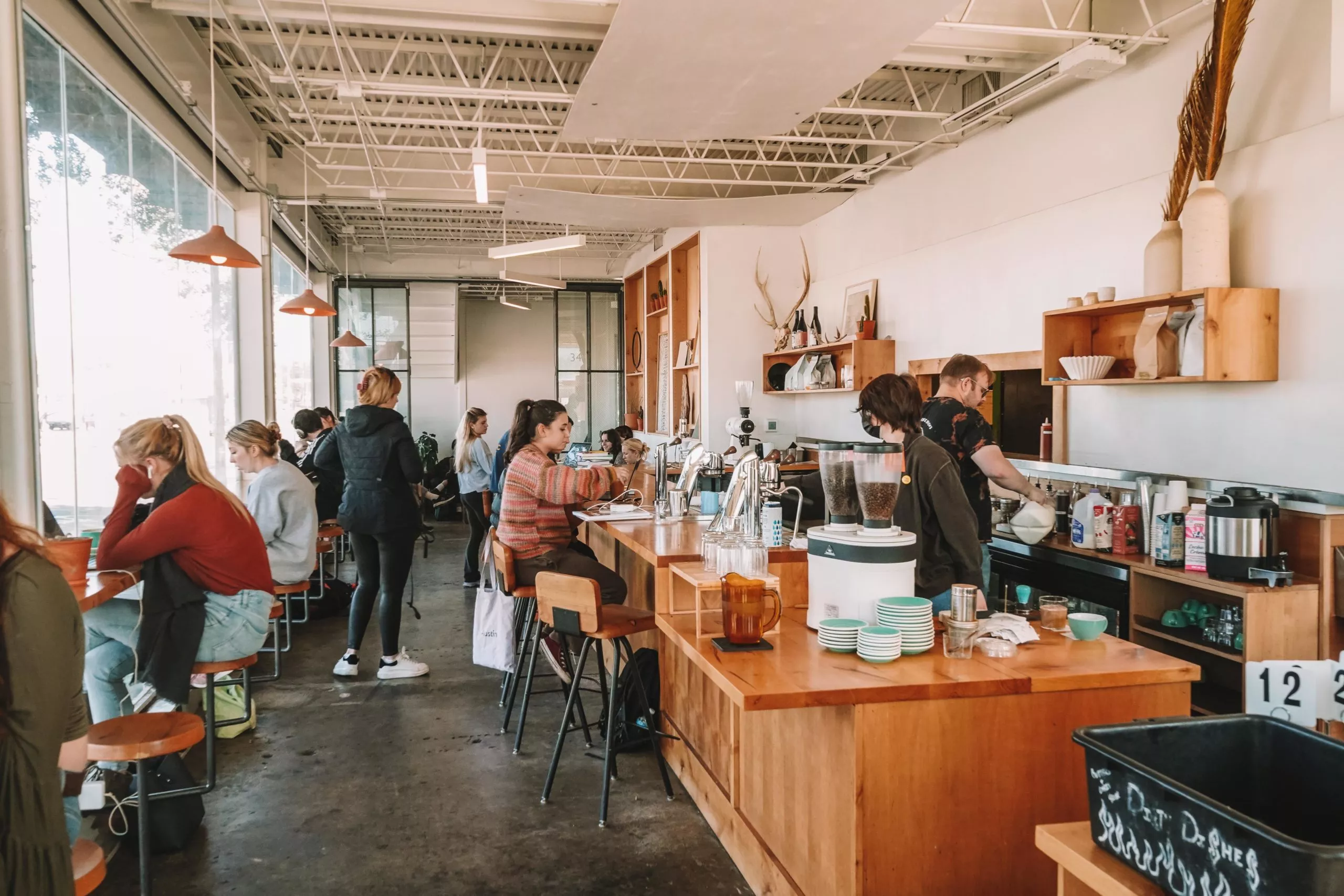Best Coffee Shops in Brooklyn for Coffee Lovers and Aficionados
Best Coffee Shops in Brooklyn for Coffee Lovers and Aficionados
Blog Article
Finding the very best Developing Approaches for Perfect Coffee
Checking out the various brewing techniques for coffee can dramatically elevate one's gratitude for this complicated beverage. Each technique, from the robust splendor of the French Press to the thorough accuracy of pour-over brewing, provides an one-of-a-kind flavor experience that caters to varied palates.

French Press Developing Technique
The French Press developing technique is a timeless method that enables coffee lovers to draw out abundant and robust tastes from their coffee grounds. Best Coffee Shops In Brooklyn. This method, likewise called a press pot or plunger pot, involves steeping coarsely ground coffee in hot water prior to dividing the grounds via a steel or nylon mesh filter
To prepare coffee making use of a French Press, start by including coarsely ground coffee to the pitcher, generally at a proportion of 1:15 coffee to water. After steeping, strongly push the bettor down to divide the grounds from the made coffee.
The result is a aromatic and robust cup that retains the all-natural oils from the coffee grounds, offering a distinctive texture and taste account. This developing method is favored for its simplicity and ability to display the special attributes of various coffee beans. Moreover, the French Press invites testing with grind dimension, high time, and coffee-to-water proportions, enabling users to customize their developing experience.
Pour-Over Approach Explained
Pour-over brewing is a thorough method that enables coffee lovers to exercise control over every aspect of the developing process, causing a tidy and lively mug of coffee. This technique involves pouring warm water over coffee grounds in a filter, allowing the water to extract flavors slowly as it goes through.
To start, it is necessary to select high-grade, freshly roasted coffee beans, preferably ground to a medium-coarse consistency. The selection of water temperature level is critical; ideally, it ought to be between 195 ° F and 205 ° F(90 ° C to 96 ° C) to maximize removal without scalding the coffee.

The overall brew time need to range from three to 4 minutes, depending on the preferred strength and taste account. The pour-over technique, precious for its clarity, provides a nuanced mug that highlights the coffee's one-of-a-kind qualities, making it a favorite amongst enthusiasts and purists alike.
Coffee Basics
Espresso brewing stands in comparison to the pour-over approach, providing a focused shot of coffee that showcases bold flavors and rich crema. This developing technique counts on compeling hot water through finely-ground coffee under high pressure, typically around 9 bars. The result is a small, extreme volume of coffee that acts as the structure for numerous espresso-based drinks, such as macchiatos, cappucinos, and coffees.
Secret components of a successful espresso shot include work dimension, tamping stress, water temperature level, and extraction time. The work dimension must be fine to facilitate optimal removal, while regular tamping makes certain also water flow with the coffee grounds. Water temperature need to ideally vary between 90 to 96 levels Celsius to avoid under-extraction or over-extraction, which can bring about unfavorable tastes.
Espresso makers been available in numerous types, from manual lever machines to automated systems, each accommodating various skill degrees and choices. Grasping the art of coffee brewing can be a gratifying useful reference experience, enabling coffee lovers to value the complexity and depth of tastes that this method can create. Inevitably, the espresso functions as a functional base for many coffee creations.
Cold Brew Refine
Cold brew coffee has actually gotten appeal for its smooth, mellow taste account go to my blog and reduced acidity, making it an appealing choice for lots of coffee enthusiasts. The chilly brew procedure stands out from traditional developing approaches, using a steeping method that draws out tastes over an extended period without warm.

As soon as soaking is total, the coffee is filtered to remove the grounds, leading to a focused mixture that can be diluted with water or milk before offering. The low developing temperature decreases acidity and resentment, generating a sweet and rejuvenating beverage.
Cold mixture can be offered over ice, blended into smoothies, or enjoyed straight, making it versatile for numerous preferences. With its special taste and smooth finish, the cool mixture procedure has actually solidified its location amongst the preferred developing methods for coffee fanatics.
Aeropress Advantages
While numerous developing techniques have their unique qualities, the Aeropress sticks out for its adaptability and ease of use. This cutting-edge gadget allows coffee enthusiasts to trying out numerous developing specifications, such as work dimension, water temperature, and soaking time, enabling the creation of a personalized cup of coffee customized to specific choices.
One significant advantage of the Aeropress is its mobility. Lightweight and small, it is an excellent selection for travelers and exterior lovers that desire a top quality mixture on the go. The Aeropress is constructed from resilient products, ensuring it withstands the rigors of traveling.
The brewing process itself is incredibly simple, making it easily accessible for both amateur and knowledgeable coffee enthusiasts - Yemen Grill. With a quick developing time of approximately one to two mins, the Aeropress produces a focused coffee comparable to espresso, enabling for an abundant taste account
Furthermore, the Aeropress is simple to clean, needing minimal upkeep contrasted to traditional brewing anonymous approaches. Its versatility reaches different coffee designs, consisting of cold mixture and also nitro coffee, making it a valuable enhancement to any coffee fan's arsenal. In general, the Aeropress integrates top quality, comfort, and versatility, making it a leading choice for coffee enthusiasts.
Final Thought
The expedition of different coffee developing techniques reveals unique attributes and taste accounts that accommodate varied preferences. Methods such as the French Press, pour-over, espresso, cool brew, and Aeropress each deal distinct benefits, adding to the overall coffee experience. Proficiency of these techniques allows for the modification of taste, body, and strength, eventually enhancing gratitude for the beverage. Engaging with these brewing methods cultivates a much deeper understanding of coffee's complexity and capacity for pleasure.
To prepare coffee making use of a French Press, start by adding coarsely ground coffee to the carafe, generally at a proportion of 1:15 coffee to water.Coffee brewing stands in comparison to the pour-over technique, providing a concentrated shot of coffee that showcases bold tastes and rich crema. Understanding the art of coffee brewing can be a fulfilling experience, permitting coffee enthusiasts to appreciate the complexity and deepness of flavors that this approach can produce. Its versatility expands to various coffee designs, consisting of cool brew and also nitro coffee, making it a useful addition to any type of coffee lover's toolbox.The exploration of various coffee developing approaches exposes distinctive qualities and taste profiles that provide to diverse choices.
Report this page